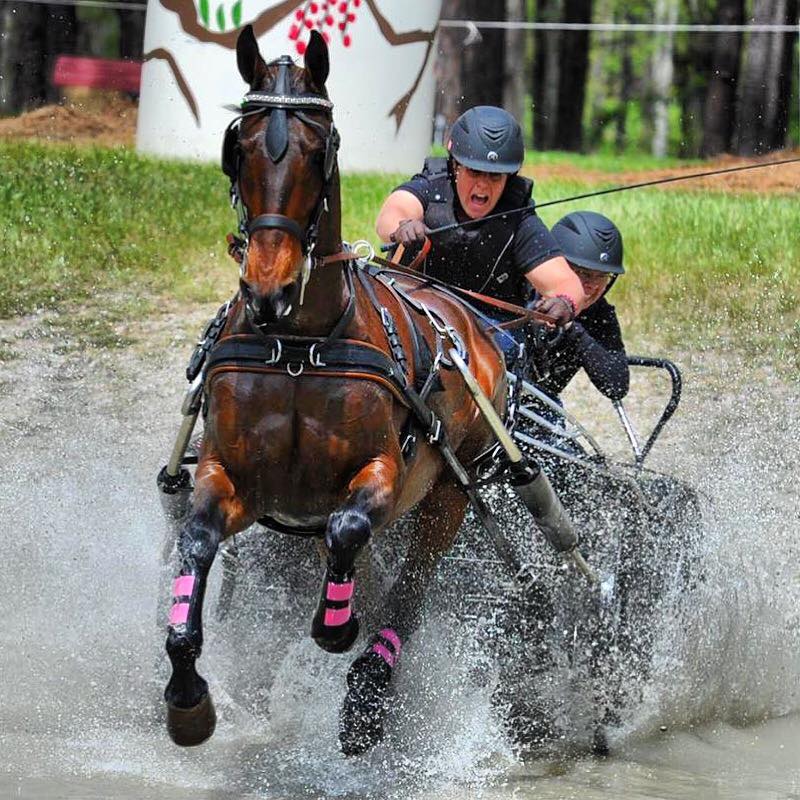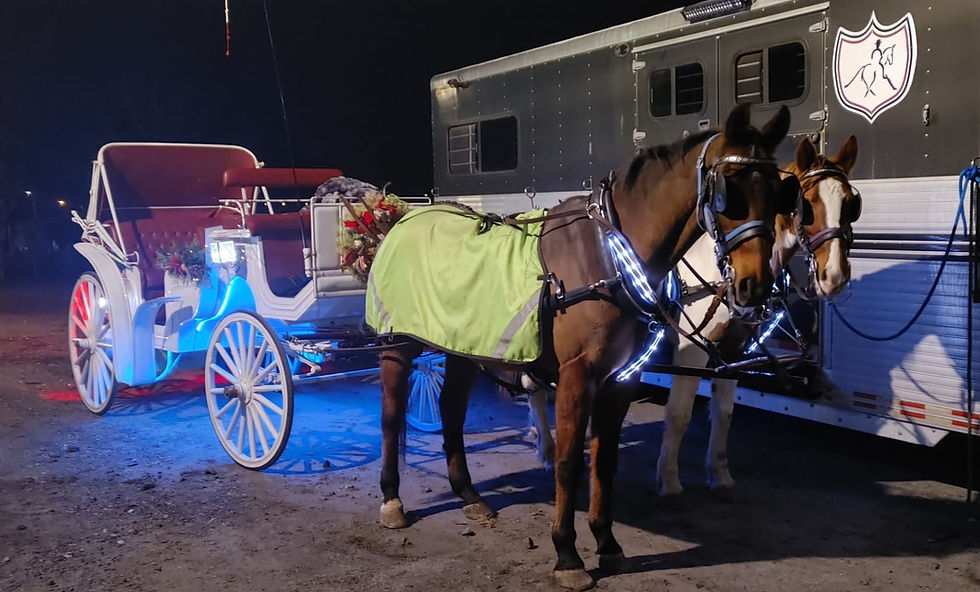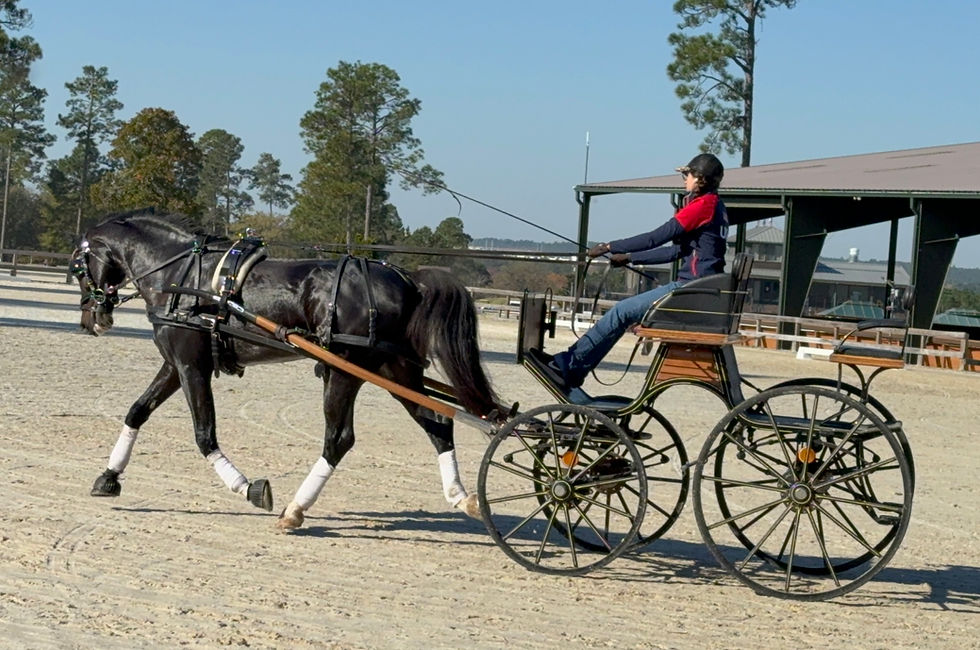Sweeney Shoulder
- jess3152

- Mar 15, 2024
- 3 min read
Sweeney Shoulder
-What is it?
If you’re lucky you’ve never heard of a shoulder sweeney in horses.Sweeney shoulder is caused by damage to the suprascapular nerve. It causes the shoulder to look hollowed out with a large dip from muscular wasting caused by the nerve damage. In driving horses the suprascapular nerve can be damaged by too much work too quickly with too little conditioning or, most commonly, from poorly fitting full collars (which is why it is so important to learn to properly measure for and fit a full collar.)
Damage can come from too much weight on an unconditioned horse with a breastcollar as well, so don’t think that just because you’re using Hungarian harness you’re horse is not at risk of a sweeney!
There is chronic and acute shoulder sweeneys. Chronic Sweeney is most often associated with carriage and work horses that pull heavy loads or have ill-fitting harness. A chronic sweeney comes from repetitive injury and damage to the nerve in the shoulder. In chronic cases there is generally significant atrophy of the two major muscles supplied by the never overlying the scapula. When the muscles atrophy the scapula becomes very prominent.
As Chronic Sweeney is less frequently seen, I was excited to come across this video of a Chronic Shoulder Sweeney: (Don’t worry, the horse is now in excellent hands to be rehabbed!)
Most frequently acute sweeneys are seen from sudden injuries such as a kick from another horse or hitting the shoulder into a door or gate that is not open wide enough. The sudden nerve injury causes the muscles of the shoulder to weaken and become unstable. Acute sweeneys have a slightly better rehab chances as there is typically not atrophy and only instability.
The initial injuries cause pain and inflammation. You might notice the horse having difficulty moving his leg forward when trying to walk. Your initial treatment is going to involve pain management and anti-inflammatories. Movement is your friend in treating a sweeney… lots of gentle controlled movement. Electrostimulation to get the nerve and muscle working together again is also very effective at helping the shoulder to recover. It takes 6-8 months for the nerve to begin to heal. Sweeneys are a very long term injury to treat.
A less conservative approach to treatment is doing surgery on the shoulder blade to remove bone and decompress the nerve. Most horses will see improvement without surgery, but the prognosis to return to their previous performance level is limited. For a driving horse where the shoulders are the most important part of the horse, the prognosis is generally not a bright one, but the power of slow steady rehab can produce amazing results.
-Full Collar Measuring and Things to Look For
Use 2 carpenter’s squares together to form a C. Place the C in front of the withers with the bottom of the C a couple inches in front of the horse’s shoulders. Leave enough room at the bottom for a finger to fit between the base of the throat and the bottom of the C. Measure the length of the C.
Full collars do NOT have a lot of adjustability. This means that a full collar that fits your 14 hand thick cob will NOT fit your 12.2 hand pony. Hence why Hungarian breast style collars are most popular to use. You can probably make a pony harness work on your 12.2 and a thick 14 hand cob. Plus, there’s a lot more “room for error” in the breast collar placement as opposed to the full collar.
More damage is caused by full collars too large than collars too small. When in doubt, go with the smaller collar. Always check the skin after you take the collar off… sores or places where the skin is rippled are collar rubs and should not be treated lightly.
Here’s a great video: https://youtu.be/tgDFPmlVs8Y?si=3HZ1DG1QSJZWMkte
Here is one of the best PDFs I’ve ever found about full collars… Save it, Print it, Refer to it often! https://www.ruralheritage.com/Scraps/FitCollar.pdf






Comments